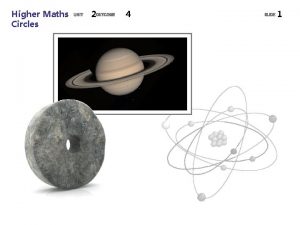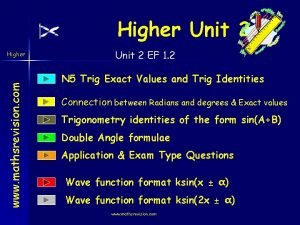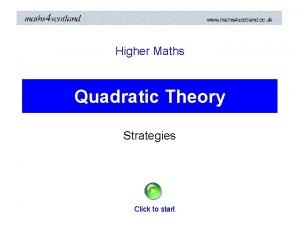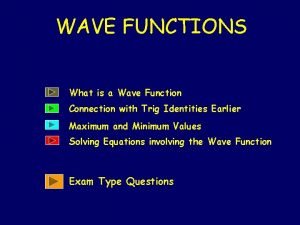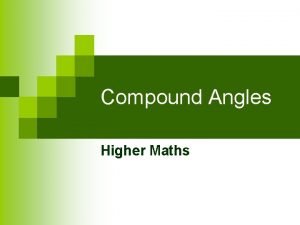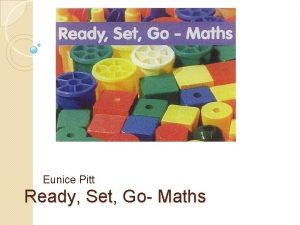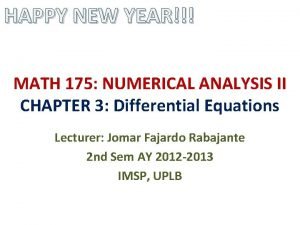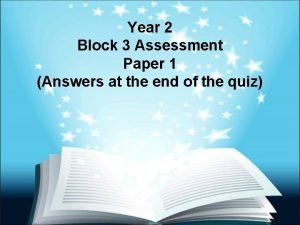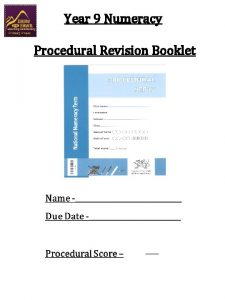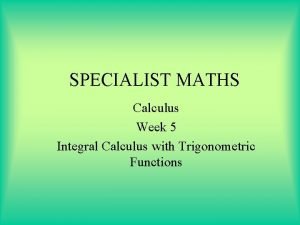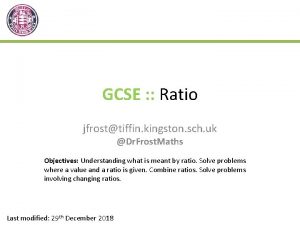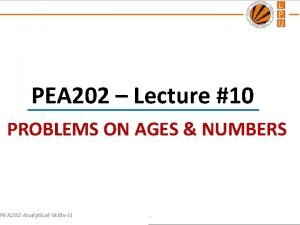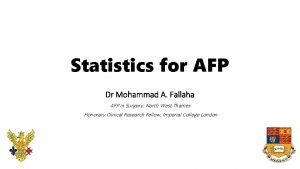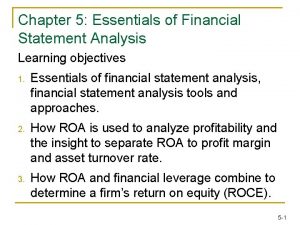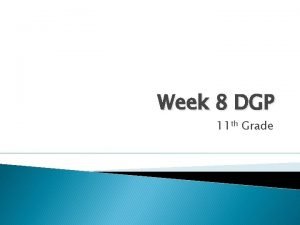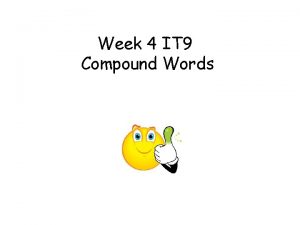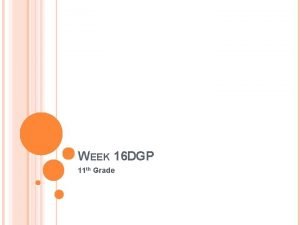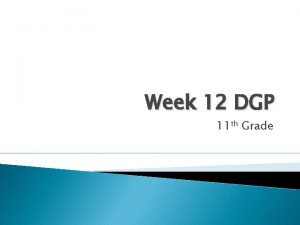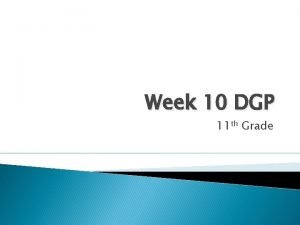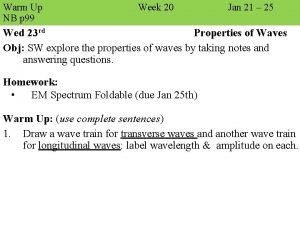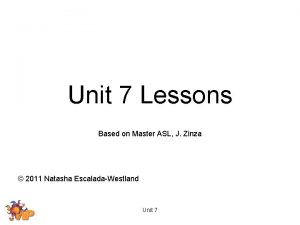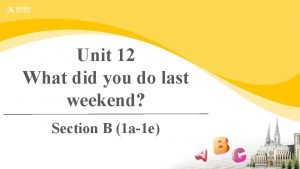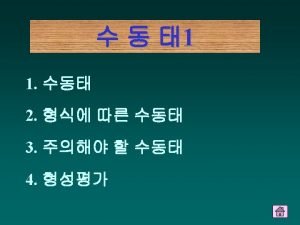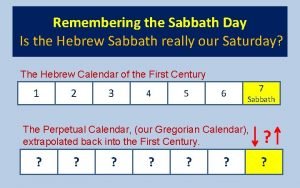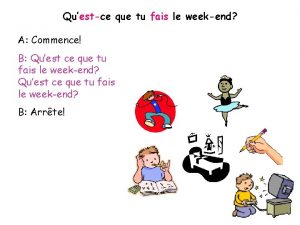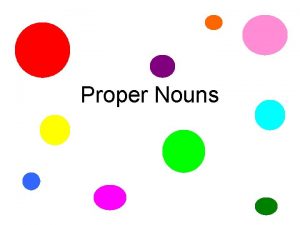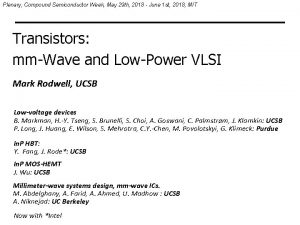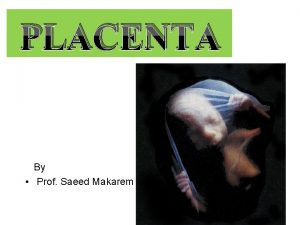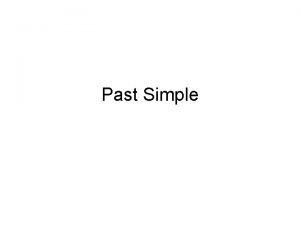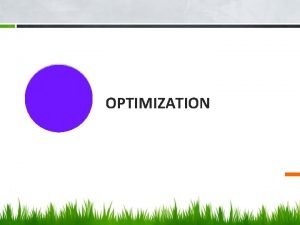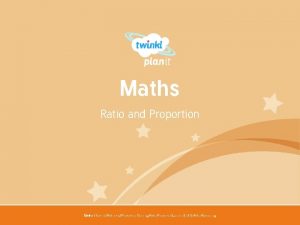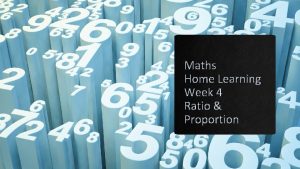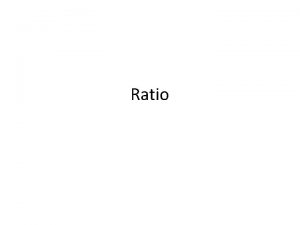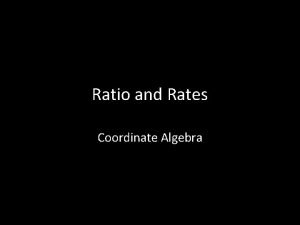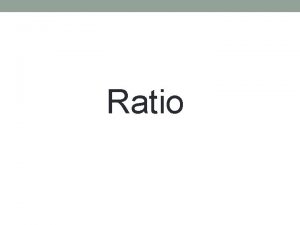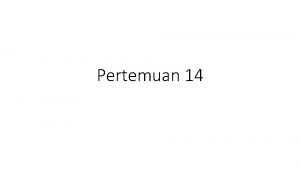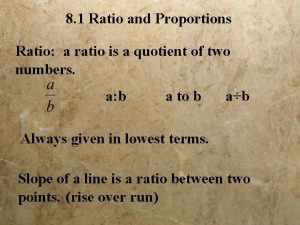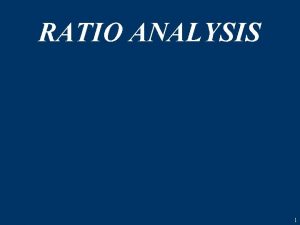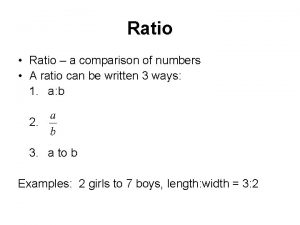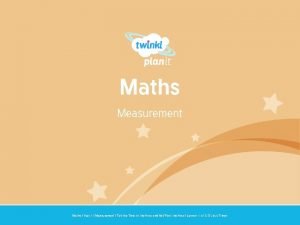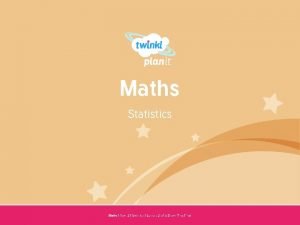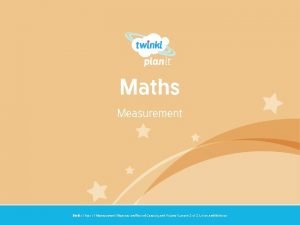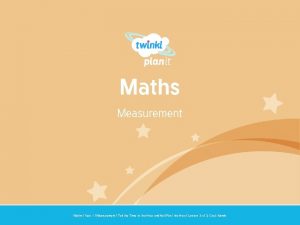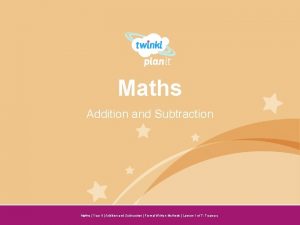Maths Year 11 Higher Ratio Week 5 Students



























































































- Slides: 91

Maths Year 11 Higher Ratio Week 5 Students with access to the internet should access www. hegartymaths. co. uk for work that has been set for them on these topics. This includes video tutorials and self marking questions to complete.

Density and Pressure Use and convert between compound units (density and pressure) in numerical and algebraic contexts.

Key vocabulary Density Mass Volume Pressure Force Area

Recap – formulae triangles P D D M S A F VT Density Speed Pressure

Recap – formulae triangles D S T M D V F P A

Density The most common units for density are: g/cm³ or kg/m³ M D V (a) A pane of glass has a mass 143 g and a volume of 55 cm³ Calculate the density of the glass. Density = 143 ÷ 55 = 2. 6 g/cm³ (b) A wooden cuboid has a density of 0. 7 g/cm³ and dimensions 3 cm by 5 cm by 8 cm. Calculate the mass of the wooden cuboid. Volume = 3 x 5 x 8 = 120 cm³ Mass = 0. 7 x 120 = 84 g

Density practice a) Calculate the density of an ice cube with mass 10. 8 g and volume 12 cm³. b) Calculate the density of a lead pipe with mass 855 g and volume 75 cm³. c) Calculate the volume of a gold bar with mass 694. 8 g and density of 19. 3 g/cm³. d) A platinum cuboid has a volume of 2 cm by 4 cm by 7 cm and a density of 21. 5 g/cm³. Calculate the mass of the platinum cuboid in kg.

Density practice solutions a) Calculate the density of an ice cube with mass 10. 8 g and volume 12 cm³. 0. 9 g/cm³ b) Calculate the density of a lead pipe with mass 855 g and volume 75 cm³. 11. 4 g/cm³ c) Calculate the volume of a gold bar with mass 694. 8 g and density of 19. 3 g/cm³. 36 cm³ d) A platinum cuboid has a volume of 2 cm by 4 cm by 7 cm and a density of 21. 5 g/cm³. Calculate the mass of the platinum cuboid in kg. Volume = 56 cm³ Mass = 1204 g Mass = 1. 204 kg

Density reason and explain A cuboid has a mass of 62. 4 g. Work out the density of the cuboid Density = Mass ÷ Volume = 8 x 4 x 3 Volume = 96 cm³ Density = 62. 4 ÷ 96 Density = 0. 65 g/cm³ 3 cm 4 cm 8 cm

Pressure Force is measured in Newtons (N), Pressure is measured in N/cm² or N/m². One pascal (Pa) is equivalent to one N/m². Force (F) Pressure (P) Area (A) An object with rectangular base of 60 cm by 80 cm is exerting a force of 2400 N. What is pressure of the object in: (a) N/cm²? (b) Pa? Area = 60 x 80 Area = 4800 cm² Pressure = 2400 ÷ 4800 Pressure = 0. 5 N/cm² Area in m² = 0. 6 x 0. 8 Area = 0. 48 m² Pressure = 2400 ÷ 0. 48 Pressure = 5000 Pa

Pressure practice Q 1: A box exerts a force of 120 newtons on a table. The pressure on the table is 32 newtons/m 2. Calculate the area of the box that is in contact with the table. Q 2: The surface area of a pair of skis is 0. 2 m 2. A skier weighs 750 N. How much pressure does the skier exert on the snow? Q 3: A cylinder with a base area of 120 cm 2 applies a force of 270 N to the floor. What is the pressure that the floor is under in N/cm 2? Q 4: A cuboid applies a force of 4500 N to a table so the pressure exerted on the table is 90 N/cm 2. On side of the base of the cuboid block is 5 cm. What is the length of the other side of the base?

Mixed compound measures practice A lobster creeps 10 m along the sea bed in 5 minutes. Find its average speed in cm/s. A silver chain has a volume of 5 cm 3. The density of silver is 10. 5 grams per cm 3. Work out the mass of the silver chain. 3. 3 cm/s A car cruises at an average speed of 50 miles per hour. How much time will it take to go 600 miles? Volume = 5 cm 3 Density = 10. 5 g/cm 3 12 hours Mass = 10. 5 × 5 Mass = 52. 5 g The density of concrete is 2. 3 g/cm 3. Work out the mass of a piece of concrete with a volume of 20 cm 3. 46 g An ice hockey puck is in the shape of a cylinder with a radius of 3. 8 cm, and a thickness of 2. 5 cm. It is made out of rubber with a density of 1. 5 grams per cm 3. Work out the mass of the ice hockey puck. Give your answer correct to 3 significant figures. The density of a cube in kg/m 3 is equal to its surface area in cm 2. Given that the edge of the cube has a length of 16 cm, calculate its mass. Give your answer to three significant figures. 8960 kg/m 3 Mass = 1. 5 × 113. 4114948 Volume of cylinder = 113. 4114948 Mass = 170. 1172422 Work out the density of the copper. Mass = Density × Volume of cylinder = π3. 82 × 2. 5 (0. 16)3 x 6 x (16)2 = 6. 29 kg The mass of 5 m 3 of copper is 44800 kg. Volume of cylinder = πr 2 h Mass = 170 g (3 sig fig) A parcel in the shape of a cube has a total surface area of 216 cm 2. The pressure it exerts on the table is 40 newtons/m 2. . Find the force the parcel exerts on the table in newtons. Force = 36 x 40 = 1440 newtons

Converting density / pressure ÷ 1000 x 10000 ÷ 1000000 = 1000 ÷ 10000 1 cm 2 = 10000 m 2

Converting practice (1)30 g/cm 3 to kg/m 3 30000 kg/m 3 (2)5000 kg/m 3 to g/cm 3 5 g/cm 3 (3)14. 5 g/cm 3 to kg/m 3 14500 kg/m 3 (4)12 n/cm 2 to n/m 2 120000 n/m 2 (5)120 n/m 2 to n/cm 2 0. 012 n/cm 2

Exam specimen questions

Exam specimen questions

Exam specimen questions

Exam specimen questions

Exam specimen questions

Exam specimen questions

Growth and Decay Set up, solve, and interpret the answers in growth and decay problems, including compound interest.

Simple interest (contextual percentage increase) $4500 is invested in a bank account for 5 years at 1% simple interest per year. How much is in the bank account after 5 years? Multiplier is 1. 01 4500 x 1. 01 = 4545 (amount after one year) So interest is $45 (4545 – 4500) 5 years of interest 5 x $45 = $225 Total amount after 5 years of interest = $4725 (4500 + 225) (a) Ali’s bank account pays interest at a rate of 3. 2% per year. If he puts £ 650 into his account, how much will Ali have after a year? 650 x 1. 032 = 670. 80 (b) Find the interest that Georgia earns on £ 80 if she keeps it in the bank, paying 7. 5% interest p. a. , for 6 months. 80 x 0. 075 = 6 6 x 0. 5 (for 6 months) = 3 Note this lesson is about growth and decay which will cover compound interest but often exam questions on this can be combined with simple interest.

Compound increase & decrease You know the formula for percentage increase & decrease: Original Amount X Multiplier New Amount = How does this change for compound increase & decrease? No. of years Original Amount X Multiplier = New Amount

Growth and decay problems (1) 1) The value of a car is £ 22, 000. Every year the value decreases by 14%. Calculate the value of the car after 5 years giving your answer to the nearest pound. The calculation we do is: After the first year, the car’s value will be 86% of its original value. After the second year it will be 86% of the first year And so on for a total of 5 (((( (£ 22, 000 x 0. 86) years… this can be written as… Initial value of 5 £ 22, 000 x 0. 86 the car = £ 10349

Growth and decay problems (2) The value of a new house is initially £ 145, 000. The value of the house increases by 15% each year. Write a formula for the value of the house, V, after t years. a) What is the value of the house after 5 years? Give your answer to the nearest pound b) After how many years will the value of the house be greater than £ 400, 000? a) V=145, 000 x 1. 15 t Initial value of the house b) Let t=5, V= 145, 000 x (1. 15)5 = £ 291, 647 c) 145, 000 x (1. 15)5 = £ 291, 647 145, 000 x (1. 15)6 = £ 335, 394 145, 000 x (1. 15)7 = £ 385, 703 145, 000 x (1. 15)8 = £ 443, 558 The number of years The value of the house becomes 15% greater than the previous year Think of it as 115% Therefore, t=8

Growth and decay problems (3) & (4) 3) Miss Smith invests £ 7300 for 4 years in a savings account. She gets 2. 7% per annum compound interest. How much money will Miss Smith have in her savings account at the end of 4 years? £ 7300 x (1. 027)4 = £ 8120. 91 4) Mr Khan invests £ 2000 in a savings account for 2 years. The account pays 2. 2% compound interest per annum. Mr Khan has to pay 10% tax on the interest earned each year at the end of each year. How much money will Mr Khan have in his account at the end of the two years? End of… Total interest Total savings 1 st year 90% of (2. 2% of £ 2000) = £ 39. 60 £ 2039. 60 2 nd year 90% of (2. 2% of £ 2039. 60) = £ 40. 38 £ 2079. 98

Problem solving and reasoning (1) Adam decides to invest £ 380 in a saving account for 6 years. The account pays a rate of 2. 54% compound interest per annum. Will Adam have sufficient money in his savings account to be able to buy a motorbike costing £ 460 in 6 years’ time? 380 x 1. 02546 = £ 441. 72 (total amount after 6 years) £ 441. 72 < £ 460 No, Adam will not have enough money

Problem solving and reasoning (2) Raj purchased a new laptop. Each year, the value of his laptop depreciated by 4%. Calculate the number of years after which the value of his laptop is 75% of its value when new. This is our formula: Value of laptop = original value of laptop x (0. 96)no. of years 0. 962 = 0. 9216 0. 963 = 0. 8847… 0. 964 = 0. 8493… 0. 965 = 0. 8153… 0. 966 = 0. 7827… 0. 967 = 0. 7514… This means that each year, the value of the laptop is 96% of the previous year’s value The idea is to find the right no. of years so (0. 96)no. of years = 0. 75 Therefore, no. of years = 7

Exam specimen questions

Exam specimen questions

Exam specimen questions

Exam specimen questions

Exam specimen questions

Exam specimen questions

Gradient and the Rate Change Interpret the gradient of a straight-line graph as a rate of change

Key vocabulary Gradient Graph Rate of Change Direct Inverse Proportion

Gradient and rate of change On a straight line graph the gradient shows how one quantity changes over time. This is the rate of change. Here are two commonly used graphs in this context: Distance time graph Velocity-time graph Here the gradient represents speed. Here the gradient represents acceleration.

How to calculate the rate of change The rate of change is simply the gradient of the line! 2 Q. Calculate the rate of change using the graph. 1 •

How to work out the rate of change Q. The graph shows the cost of three different mobile tariffs. a) Calculate the rate of change for tariff: i) A ii) B iii) C after 60 minutes b) Bob uses 40 minutes on average. Which tariff should he buy if he wants to pay the least amount?

How to work out the rate of change • b) At 40 minutes, which tariff is the cheapest? so Bob should buy tariff A

Practice (1) You get on a train at 10 am. Starting from rest the train takes 15 minutes to reach a speed of 70 km/h. It stays at this speed for another 15 minutes and then during the next 30 minutes its speed reaches 110 km/hour. The train stays at this speed for another 15 minutes. After, the train begins to steadily slow down to reach the next station. It takes the train 30 minutes to steadily slow down to a stop. a) Draw this information on a speed-time graph. b) What time do you reach the next station? c) What is the deceleration of the train ? d) At what points on the graph is speed inversely proportional to time?

Practice (1) solution

Practice (2) The following represents the balance in Brady’s saving account. (a) Find the slope of the graph 100 (b) What does the slope represent as a rate of change? Every month Brady deposited £ 100 in his savings account (c) How much did Brady deposit when he opened the account? £ 300 (d) At this rate how much money will Brady have in his account after 15 months. Show your reasoning. £ 1800

Practice (3) 100 -102 km 42 -43 miles 28 ÷ 18 = 1. 55… 1 mile – 1. 6 km 180 160 140 Kilometres 120 100 80 60 40 28 20 18 0 10 20 30 40 50 60 70 80 90 100 Miles

Practice (4) Let P be pounds and K be kilograms. 12 kilograms 10 8 a) Using the conversion graph, find a formula for K in terms of P. 6 b) Find K, given P=20. K = 0. 5 P K = 10 c) Asiya went to the butchers. She bought 4 pounds of lamb meat, 5 kg of 2 chicken and 2 pounds of beef mince. 0 0 2 4 6 8 10 12 14 16 18 20 22 24 4 pounds in kg. Work out Asiyas total mass 2 kg + 5 kg + 1 kg = 8 kg

Exam specimen questions You can use this graph to change between inches and centimetres. (a) Change 74 cm in inches. (b) Daniel’s height is 6 feet 3 inches. 1 foot = 12 inches. What is Daniel’s height in centimetres? [4 marks]

Exam specimen questions

Exam specimen questions

Direct and inverse proportion Construct and interpret equations that describe direct and inverse proportion

Key vocabulary Inverse Direct Proportional Equation Constant

Direct proportion y is directly proportional to x. y = 20 when x = 4. By writing an equation of proportionality, work out the value of y when x = 7 Write y = kx x can change depending on the information given Substitute y = and x = into the equation y is directly proportional to square of x. y = 150 when x = 5. By writing an equation of proportionality, work out the value of x when y = 54 y = kx 2 20 = k × 4 150 = k × 52 150 = k × 25 Solve to find value of k 5=k 6=k Re write original equation with value for k substituted y = 5 x y = 6 x 2 Substitute value given in question into equation to find other value y = 5 × 7 = 35 y = 35 54 = 6 x 2 54 = x 2 6 9 = x 2 3=x

Direct proportion practice BRONZE 1. 2. 3. 4. GOLD SILVER y is proportional to x. When x = 4, y = 14. Find y when x = 10. 5. y is proportional to x 2. When x = 4, y = 80. Find y when x = 5. 125 a is proportional to b. When a = 5, b = 8. Find b when a = 12. 19. 2 6. f is proportional to g 2. When f = 6, g = 3. Find f when g = 6. d is proportional to t. When t = 1. 2, d = 48. Find t when d = 60. 7. 35 1. 5 p is proportional to q. When p = 15, q = 80. Find p when q = 30. 5. 625 8. 24 A is proportional to r 3. When r = 7, A = 21. Find A when r = 14. 168 x 3. h is proportional to When h = 60, x = 2. Find h when x = 5. 9. y is proportional to the square root of x. When x = 9, y = 60. Find y when x = 25. 100 Find x when y = 80. 16 10. r 2 is proportional to t 3. When r = 8, t = 4. Find r when t = 9. 27 Find t when r = 1000. 100 11. a is proportional to the cube root of b. When a = 2, b = 64. Find a when b = 125. 937. 5 Find b when a = 3. Click on “Bronze”, “Silver” or “Gold” to see answers for that section 2. 5 216

Inverse proportion y is inversely proportional to x. y = 6 when x = 2. By writing an equation of proportionality, work out the value of x when y = 0. 4 Write y = k x y=k x 3 y=k x x can change depending on the information given 6=k 2 12 = k Substitute y = and x = into the equation Solve to find value of k Re write original equation with value for k substituted Substitute value given in question into equation to find other value y is inversely proportional to cube of x. y = 0. 5 when x = 4. By writing an equation of proportionality, work out the value of y when x = 2 0. 5 = k 43 32 = k y = 32 x 3 y = 12 x 0. 4 x = 12 = 30 0. 4 y = 32 23 y = 32 8 y=4

Inverse proportion practice BRONZE 1. 2. 3. GOLD SILVER y is inversely proportional to x. When x = 3, y = 5. Find y when x = 2. 7. 5 4. p is inversely proportional to q. When p = 7, q = 4. Find q when p = 14. 2 5. L is inversely proportional to r. When L = 1. 2, r = 5. Find L when r = 15. 0. 4 6. y is inversely proportional to x 2. When x = 2, y = 50. Find y when x = 5. 9. 8 k is inversely proportional to g 2. When k = 1, g = 3. Find f when g = 6. 0. 25 V is inversely proportional to r 3. When r = 2, V = 12. Find V when r = 4. 1. 5 y is inversely proportional to the square root of x. When x = 9, y = 8. Find y when x = 25. 4. 8 Find x when y = 24. 1 10. r 2 is inversely proportional to t 3. When r = 8, t = 4. Find r when t = 1. Find t when r = 1. Click on “Bronze”, “Silver” or “Gold” to see answers for that section 64 16

Problem solving and reasoning The attractive force between 2 objects is inversely proportional to the square of their distance apart. The force is 0. 96 Newtons when the distance is 10 miles. What will the force be when the distance is 12 miles? Force ∝ 1/Distance 2 F = k/D 2 Substitute F = 0. 96 and D = 10 into F = k/D 2 0. 96 = k/102 0. 96 × 100 = k 96 = k F = 96/D 2 Substitute D = 12 into the equation above F = 96/122 F = 96/144 F = 2/3

Problem solving and reasoning The distance it is possible to see on a clear day, d miles, varies directly with the square root of the height, h metres, somebody is stood above sea level. Standing on a pier 9 metres above sea level it is possible to see 21 miles. Standing on top of a cliff it is possible to see the coast 35 miles away. How high are the cliffs to the nearest metre? Distance ∝ √Height d = k √h Substitute d = 21 and h = 9 21 = k √ 9 21 = 3 k 7 = k d = 7 √h Substitute d = 35 35 = 7 √h 5 = √h 25 = h

Exam specimen questions

Exam specimen questions

Exam specimen questions

Exam specimen questions

Exam specimen questions

Exam specimen questions

Exam specimen questions

General Iterative Processes Work with general iterative processes.

Key vocabulary Bisection Iterative Processes Y axis X axis Solution Equation Function

Substitution solutions

Using the iterative process to solve an equation The solutions of the equation formed when the function is equal to 0. The solution is where the graph 1) y = x 2 + 6 x + 2 crosses the x axis and y = 0. Here we can see it crosses the x axis between 0 and -1. Therefore the solution to the equation must also lie between 0 and -1.

Using the iterative process to solve an equation What is the solution to the equation x 2 + 6 x + 2 = 0 to 1 decimal place? Substitute into y = x 2 + 6 x + 2, x values between the limits 0 and -1. X value Y value -0. 1 1. 41 -0. 2 0. 84 -0. 3 0. 29 -0. 4 -0. 24 The solution is -0. 4 The sign has changed from positive to negative so we know that the solution lies between -0. 3 and -0. 4

Re-arranging equation for iterative form • This is the starting term. This means the next term. -7 x + 100 To both sides Cube root both sides One hundred minus seven multiplied by the starting term, all cube rooted, is equal to the next term.

Using iterations to find a solution • Xn Xn+1 4 4. 1601 4. 1385 4. 141415 Start with one value and keep using the outcomes as your next starting value. Therefore 4. 14 2 dp is the solution to x 3 + 7 x - 100 These round to the same answer to 2 dp. (4. 14). Hence this is the solution.

Practice 1) Re-arrange these equations to make xn+1 the subject a) x 3 + 3 x - 1 = 0 b) 2 x 3 + 4 x = 0 c) x 3 - x + 3 = 0 d) 3 x 3 + 9 x - 27 = 0 2) x 3 + 5 x – 10 only has one solution, show that this solution lies between 1<x<1. 5 Substitute x = 1 to get, -4 Substitute x = 1. 5 to get, 0. 875 As this is a negative and positive value we know that the solution lies between 1 and 1. 5 3) x 3 - 2 x – 8 only has one solution, show that this solution lies between 2<x<2. 5 Substitute x = 2 to get, -4 Substitute x = 2. 5 to get, 2. 625 As this is a negative and positive value we know that the solution lies between 2 and 2. 5

Problem solving and reasoning Xn Xn+1 3 3. 271 3. 228 3. 235 3. 234 Substitute in our xn values in the rearranged formula. The solution is 3. 23 (2 dp)

Reason and explain § How would x 2 + x – 2 = 0 be re- arranged into its iteration formula? § How would x 3 + 2 x 2 + 5 x + 10 = 0 be re- arranged into its iteration formula? § What do xn+1 and xn mean? § Why do we want to look out for a sign switch (positive to negative) during the iterative process?

Exam specimen questions

Exam specimen questions

Exam specimen questions

Exam specimen questions

Gradients and the Rate of Change Understand that the gradient at a point on a curve is the instantaneous rate of change, and apply the concepts of average and instantaneous rate of change (gradients of chords and tangents) in contexts (numerical, algebraic and graphical)

Key vocabulary Gradient Curve Rate of change Instantaneous Tangent Average Differentiation Derivative

Instantaneous rate of change graphically We can calculate the instantaneous rate of change by calculating the gradient of the curve at one point. The gradient of a curve changes at each point so how can we calculate the gradient? e. g. Calculate the instantaneous rate of change of the curve y = x 2 + 2 x + 2 when x=0. 1) Draw a tangent to the curve at the point (0, 2) 2) Calculate the gradient of the tangent Gradient of tangent = instantaneous rate of change Instantaneous rate of change = 6/3 = 2

Instantaneous rate of change graphically practice x = -2 x = 1 Demonstrate solutions on IWB. x = -2 x = 0

Instantaneous rate of change algebraically Given the equation y=2 x³ + 3 x what is the instantaneous rate of change at x = 2? y = 2 x 3 + 3 x We now know that the rate of change refers to the gradient so we can use differentiation to solve the question dy/dx = 6 x 2 + 3 When x = 2, dy/dx = 6(2)2 + 3 = 27 Example from slide 4: Calculate the instantaneous rate of change of the curve y = x 2 + 2 x + 2 when x=0. dy/dx = 2 x + 2 when x = 0 dy/dx = 2(0)2 + 2 = 2 Same solution as graphically answer

Instantaneous rate of change algebraically practice Equation y = 4 x 2 + 7 x + 2 dy/dx (differentiate) When x = Instantaneous rate of change 8 x + 7 x = 1 15 y = x 3 + 2 x 2 - 3 x 3 x 2 + 4 x - 3 x = 2 17 y = 2 x 3 - 3 x 2 + x 6 x 2 – 6 x + 1 x = -2 37 y = 3 x 3 + x 2 + 6 x – 3 9 x 2 + 2 x + 6 x = 5 241

Average rate of change e. g. Calculate the average rate of change of the graph of y = 2 x 2 – 2 between x = 1 and x = 3/2 Here, we need to calculate the average gradient between these two points We use the formula; average rate of change = (y 2 - y 1)/(x 2 – x 1) Where (x 1, y 1) and (x 2, y 2) are two points on the curve Our two points are (1, 0) and (1. 5, 2. 5) Average rate of change = (2. 5 - 0)/ (1. 5 - 1) = 5

Practice (1) The graph shown is of y = - 1/(x - 3) a) Calculate the instant rate of change at x = 0 b) Calculate the average rate of change in the interval [0, 0. 5] a) Instant rate of change = (1 -0)/(6 - -3) = 1/9 b) (0, 1/3) and (0. 5, 0. 4) Average rate of change = (0. 4 – 1/3)/(0. 5 - 0) = 2/15

Practice (2) 1) f(x) = √x ; Find f’(144) f’(x) = 1/2√x f’(144) = 1/2√ 144 = 1/24 2) f(x) = x 2 – 6 x – 2; Find f’(-14) f’(x) = 2 x – 6 f’(-14) = 2(-14) – 6= -34 3) Find the equation of the tangent line to the curve f(x) = 3 – 4 x 2 at the point where x = 1 f’(x) = -8 x f’(1) = 18 Eqn of the line with gradient = 18 through (1, -1) is y- -1 = 18 (x - 1) y + 1 = 18 x -18 y = 18 x - 19

Practice (3) • Draw a straight line that just touches the curve where x = 2 5 à This line is known as a tangent to the curve 2. 2 x = 2 -5 2 5 à You can calculate the gradient of it like on a straight line graph à The value will be an estimate of the gradient of the curve at the given point -5

Problem solving and reasoning Using the graph, calculate the instantaneous rate of change when the fork compression is 60 mm Rate of change = 50/120 = 5/12

Exam specimen questions

Exam specimen questions

Exam specimen questions
 Week by week plans for documenting children's development
Week by week plans for documenting children's development Days of the week and months of the year
Days of the week and months of the year What was the first fbla state chapter
What was the first fbla state chapter Higher maths exact value triangles
Higher maths exact value triangles Quadratic theory higher maths
Quadratic theory higher maths Vectors maths
Vectors maths Equation of a circle higher maths
Equation of a circle higher maths Higher maths notes
Higher maths notes Higher maths exact values
Higher maths exact values Higher maths circles
Higher maths circles Lowther higher maths ebook download
Lowther higher maths ebook download The circle shown has equation x^2+y^2=49 a is on the x axis
The circle shown has equation x^2+y^2=49 a is on the x axis Exact value triangles higher maths
Exact value triangles higher maths Quadratic theory higher maths
Quadratic theory higher maths Higher maths integration
Higher maths integration Satc trigonometry
Satc trigonometry Ib syllabus changes
Ib syllabus changes Higher maths trig equations
Higher maths trig equations Why was rizal called the champion of filipino students?
Why was rizal called the champion of filipino students? Year 5 mental maths test
Year 5 mental maths test Mental maths year 5 with answers
Mental maths year 5 with answers Year 4 mental maths test
Year 4 mental maths test Year 4 mental maths tests
Year 4 mental maths tests Year 3 mental maths test
Year 3 mental maths test Mental maths test year 1
Mental maths test year 1 Maths mastery year 3
Maths mastery year 3 Nrich maths investigations
Nrich maths investigations Go maths year 1
Go maths year 1 Year 4 mental maths tests
Year 4 mental maths tests Year 2 mental maths test
Year 2 mental maths test Math 175
Math 175 Answer sheet
Answer sheet Mental maths tests year 3
Mental maths tests year 3 Year 2 mental maths test
Year 2 mental maths test Year 2 mental maths test
Year 2 mental maths test Wigan mental maths year 2
Wigan mental maths year 2 Year 11 general maths
Year 11 general maths Wigan mental maths year 1
Wigan mental maths year 1 Year 9 maths revision booklet
Year 9 maths revision booklet Mental maths test year 5
Mental maths test year 5 Year 3 mental maths tests
Year 3 mental maths tests Year 3 mental maths test
Year 3 mental maths test Spec maths formula sheet
Spec maths formula sheet Year 5 mental maths test questions and answers
Year 5 mental maths test questions and answers Wigan mental maths year 5
Wigan mental maths year 5 Year 1 mental maths test
Year 1 mental maths test Ratio questions gcse
Ratio questions gcse Poem for year 6
Poem for year 6 Combining ratios gcse
Combining ratios gcse One year ago the ratio of sooraj
One year ago the ratio of sooraj Rr statistics
Rr statistics Velocity ratio of bevel gear
Velocity ratio of bevel gear Acid test ratio and quick ratio
Acid test ratio and quick ratio Insight theory
Insight theory Genotype and phenotype ratio
Genotype and phenotype ratio Measures of association in epidemiology
Measures of association in epidemiology Current ratio and quick ratio
Current ratio and quick ratio Htcondor week
Htcondor week Htcondor week 2022
Htcondor week 2022 Ana ascenção e silva
Ana ascenção e silva Reading arthur miller's play the crucible
Reading arthur miller's play the crucible Dgp week 8 answers
Dgp week 8 answers Simple compound words
Simple compound words Dgp week 16
Dgp week 16 Dgp week 12 answers
Dgp week 12 answers Dgp week 11
Dgp week 11 Dgp week 20 answers
Dgp week 20 answers Tv turn off week
Tv turn off week Spatial organization asl
Spatial organization asl What _____________ (you/do) last weekend?
What _____________ (you/do) last weekend? What did your last weekend look like
What did your last weekend look like Kanji days of the week
Kanji days of the week Who broke this window
Who broke this window Week names
Week names Omer meroz
Omer meroz Surgical education week
Surgical education week Cfnc free application week
Cfnc free application week Stem person of the week
Stem person of the week Sats week
Sats week April 6 32ad calendar
April 6 32ad calendar Tu fais quoi ce week end
Tu fais quoi ce week end Book name proper noun
Book name proper noun Compound semiconductor week
Compound semiconductor week Placenta formation
Placenta formation Physical fitness merit badge requirements
Physical fitness merit badge requirements Did you play football yesterday in which tense
Did you play football yesterday in which tense I delivered goods to my friends
I delivered goods to my friends Holy week timeline
Holy week timeline We need to enclose a field with a fence. we have 500 feet
We need to enclose a field with a fence. we have 500 feet 5 a day language review week 23
5 a day language review week 23 Last weekend i went to my friend's birthday party
Last weekend i went to my friend's birthday party 2 week dating challenge
2 week dating challenge






